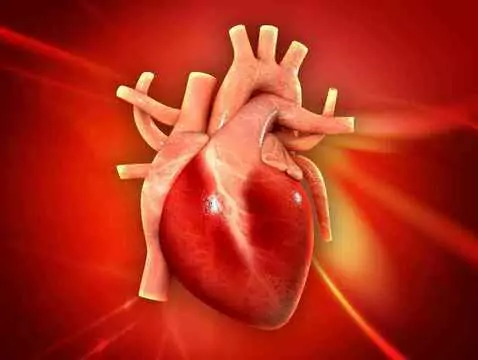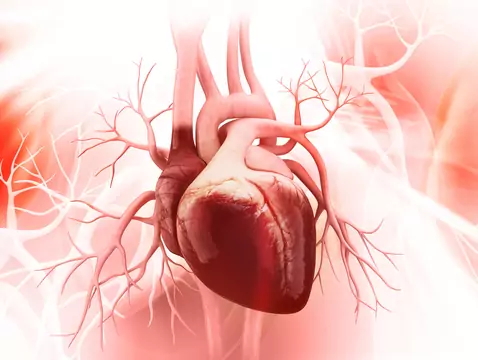
Artichokes and their effects on fat metabolism
The artichoke (Cynara scolymus) was already cultivated in ancient Rome and Greece, where its digestive-enhancing properties were appreciated. Over the years, the plant became widespread in...

Lycopene - a carotenoid that reduces the risk of myocardial infarction
Lycopene is a compound belonging to the family of carotenoids - natural antioxidants. It gives vegetables and fruit their red colour. It has a proven effect in reducing the risk of cancer and also...

Nutrition in atherosclerosis
Atherosclerosis (Atherosclerosis) is a disease involving the arteries. The essence of the disease is the deposition of cholesterol, its esters and lipids in the inner membrane of the arterial vessel....

Cardiac anaemia - causes, symptoms, diagnosis, treatment
Cardiac anaemia, or ischaemic heart disease, is nothing more than a syndrome of various symptoms that are caused by ischaemia of the heart muscle. This condition affects not only adults and the...

Myocardial infarction - causes, symptoms, diagnosis, treatment
Myocardial infarction refers to necrosis of an organ or tissue caused by ischaemia. Depending on the site of ischaemia, a distinction is made between infarction of brain tissue (cerebral ischaemic...

Coronary heart disease - how to prevent it?
Cardiovascular disease is one of the greatest medical challenges of the 21st century. The increase in disease incidence and mortality is particularly noticeable in highly developed countries....

Cardiogenic shock
Cardiogenic shock (CS) is one of the worst cardiovascular pathologies caused by inadequate blood flow (hypoperfusion) through the tissues. It most often occurs as a complication of fresh myocardial...

Myocardial infarction - causes, symptoms, diagnosis, treatment, how to recognise
Cardiovascular diseases are among the most common conditions in our population, leaving even cancer behind. One of their most serious consequences is myocardial infarction. How do you recognise that...

Chest pain - is it a heart attack?
Amyocardial infarction is an acute coronary syndrome in which the lumen of an artery closes. The most characteristic symptom is chest pain, but there are also a number of other unusual symptoms that...

Diet after myocardial infarction
Myocardialinfarction is a condition that is an immediate threat to the patient's life and health. It is classified as one of the coronary heart diseases, in which an area of necrosis develops due to...

Prinzmetal angina - causes, symptoms, diagnosis, treatment
Prinzmetal angina is one of the forms of coronary artery disease, and the symptoms accompanying it, are associated with atherosclerotic lesions present in the coronary arteries of the heart. Pain,...

Complications after myocardial infarction
Myocardial infarction is caused by necrosis of the heart muscle cells, in a given area, which occurs due to closure of the lumen of a coronary vessel. Its characteristic symptoms are stabbing and...

Myocardial infarction - causes, symptoms, diagnosis, treatment, first aid
A myocardial infarctionis a life-threatening condition. It occurs when the blood supply to the heart is disrupted due to, among other things, coronary insufficiency. If a person suspects the...

Thrombosis - causes, symptoms, diagnosis, treatment
In a healthy, well-functioning body, blood flowing through the blood vessels delivers essential nutrients and oxygen to all organs. When clots begin to form in the vessels, this is not possible. A...

Atherosclerosis - causes, symptoms, diagnosis, treatment
Atherosclerosis is a disease that affects an increasing number of people, not only the elderly, but also younger people (children, adolescents and young adults). It used to be thought that lifestyle...

Hypertension and coronary artery disease - causes, symptoms, diagnosis, treatment
The human body is a very complex system. One of the most important systems, is the circulatory system, consisting of the heart, arteries, veins and blood vessels that supply blood to every corner of...

Ischaemic heart disease - causes, symptoms, diagnosis, treatment
Ischaemic heart disease (IHD), also referred to as coronary artery disease or angina pectoris. It is possible to determine a patient's risk of developing this disease (e.g. on the basis of...

Myocardial infarction - causes, symptoms, diagnosis, treatment
Myocardial infarction is a condition in which the artery supplying blood to the heart is most often closed by a blood clot. The clot is formed by the rupture of an atherosclerotic plaque. The result...


